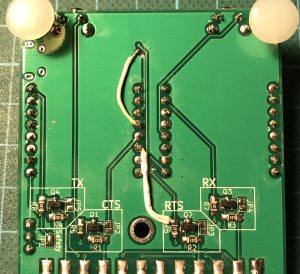Still trying to save my batteries
By now it is time for at least an intermediate update on this project. In the meantime I have indeed revised the sensor boards by adding a switching transistor controlled through one of the remaining digital pins on the ATmega. The firmware was modified, and it will now power down the attached sensors before entering sleep mode. Disappointingly, this resulted in a battery lifetime extended by no more than roughly 10%.
On a mostly unrelated note, the voltage graph now looks “stepped” when compared to the previous one. This seemed to be a direct result of switching from maniacbug’s original driver for the RF24 module to the one newly optimized by tmrh20. I’ve got absolutely no clue why this would affect the voltage measurement against the bandgap reference, but there it was. If you can shed some light on this, please leave me a comment.
The next thing I tried, somewhat desperately, was to reduce the number of data samples by increasing the sleep time from 1 minute to 5 minutes. This had no discernible effect on battery life-time. But at least it leads to the conclusion that I need to further investigate power consumption during sleep mode.
So, just assuming that it was the sensors that were draining the batteries in sleep mode turned out to be a bad idea. Now I really need to replace my crappy 7€ multimeter with something a little more precise that will allow me to actually measure which part of the circuit is drawing which amount of current.

























